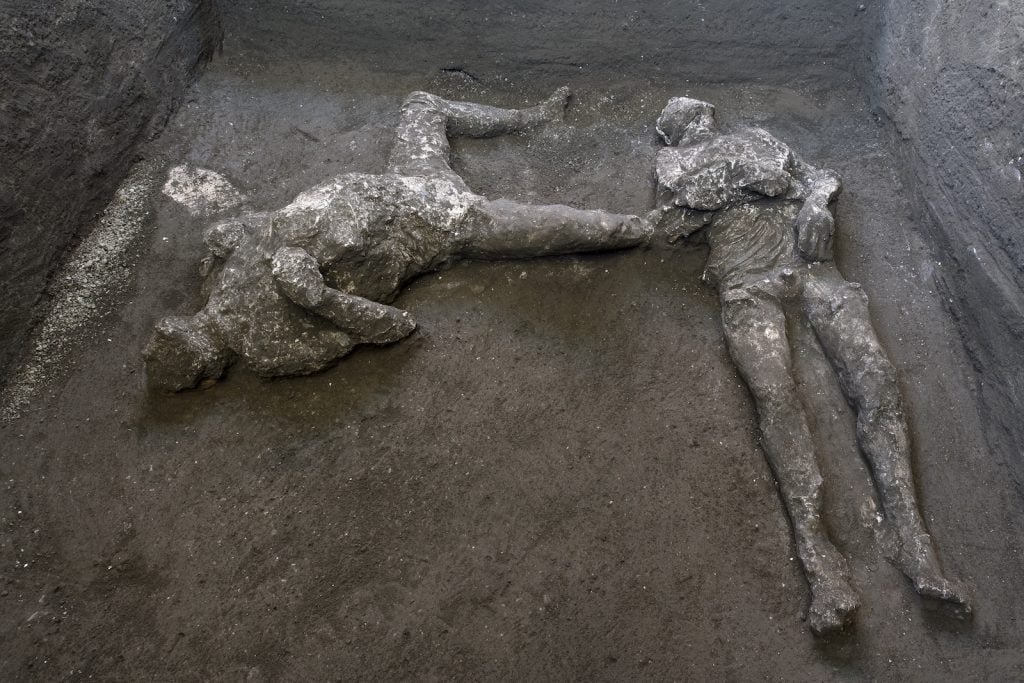Art World
Archaeologists at Pompeii Have Discovered the Bones of What May Have Been a Master and a Slave Killed by the Eruption of Vesuvius
The two men may have been trying to escape the city.

The two men may have been trying to escape the city.

Brian Boucher

Two new sets of human remains have been discovered from the ashes at Pompeii, where the volcano Vesuvius destroyed an entire city in 79 A.D.
In a villa overlooking the Bay of Naples in the suburb of Civita Giuliana, these two figures were buried under six and a half feet of ash. Officials say the two men were probably master and slave.
Led by archaeologist Luana Toniolo, the team that made the discovery was made up of nine researchers, including an anthropologist, a vulcanologist, and a geologist.
Beneath a layer of hardened ash, they found two voids with bones in them. Once the bones were removed, experts poured plaster in to create the molds of the two men’s skeletons.
A remarkably clear picture has emerged of a five-foot-tall man of about 25 years old, who, due to compressions in his spine, is presumed to have carried out manual labor, indicating that he may have been a slave. He wore a short tunic, perhaps made of wool.
The other victim was slightly taller, and aged 30 to 40 years. He wore “more intricate clothing,” according to a press statement, namely a tunic and mantle, indicating more elevated status.
Near the victims were voids that, when filled in, revealed piles of cloth, which the men may have been trying to take with them.
Excavations have been ongoing since January at the villa where the men were found, which is almost a half mile from the city proper. Digs have revealed the presence of a horse in rooms deemed to have been the servants’ area.
Among the areas that have been explored are living rooms, bedrooms with cocciopesto floors, and a banquet hall with marble decorations in the floor that was in mid-renovation at the time of the eruption.
After a full day of raining pumice came the first flow of lava, ash, and gases, say the archaeologists. About a half hour after the first flow, they say, there was a second, more violent flow, destroying the city as many tried in vain to escape.